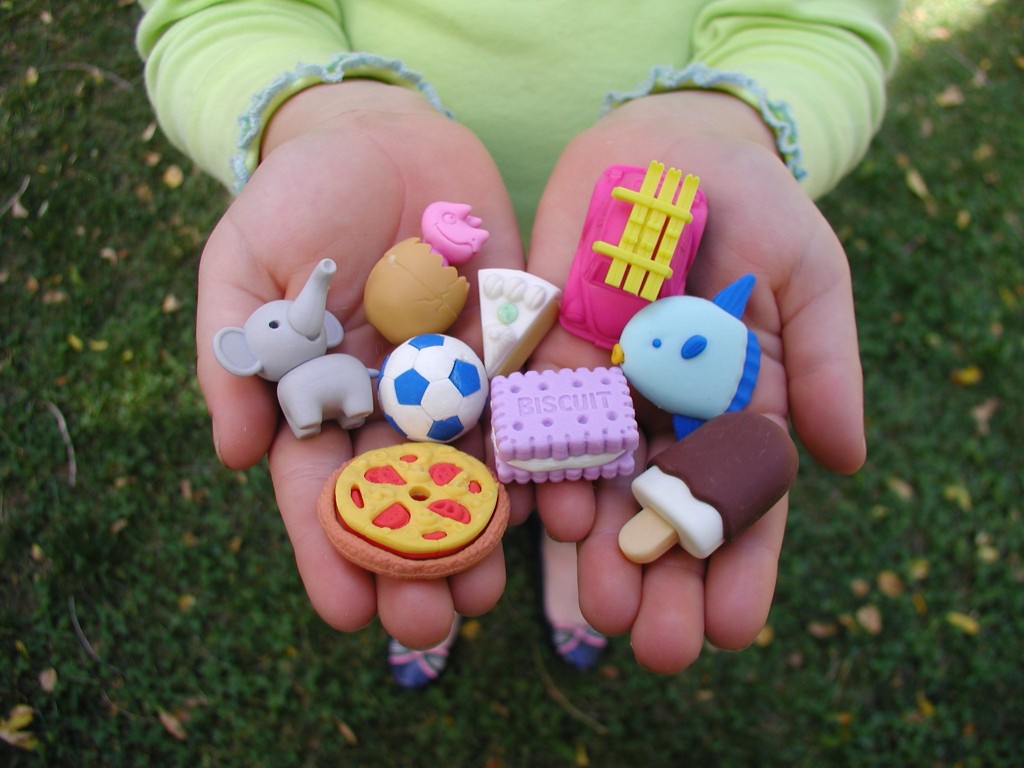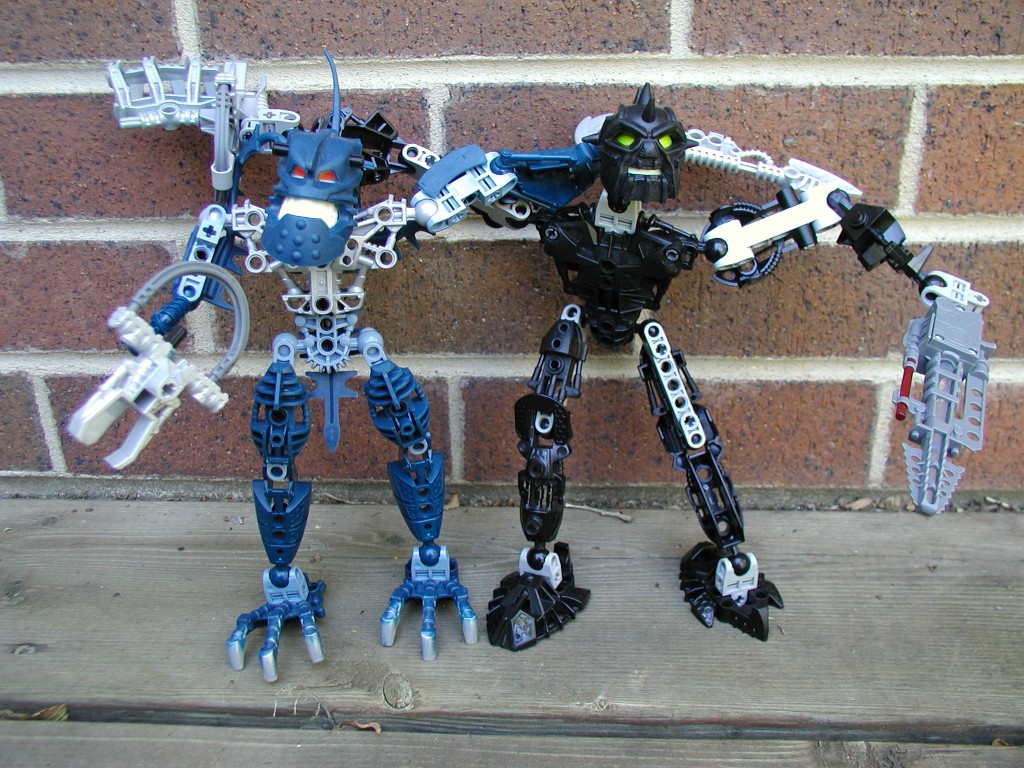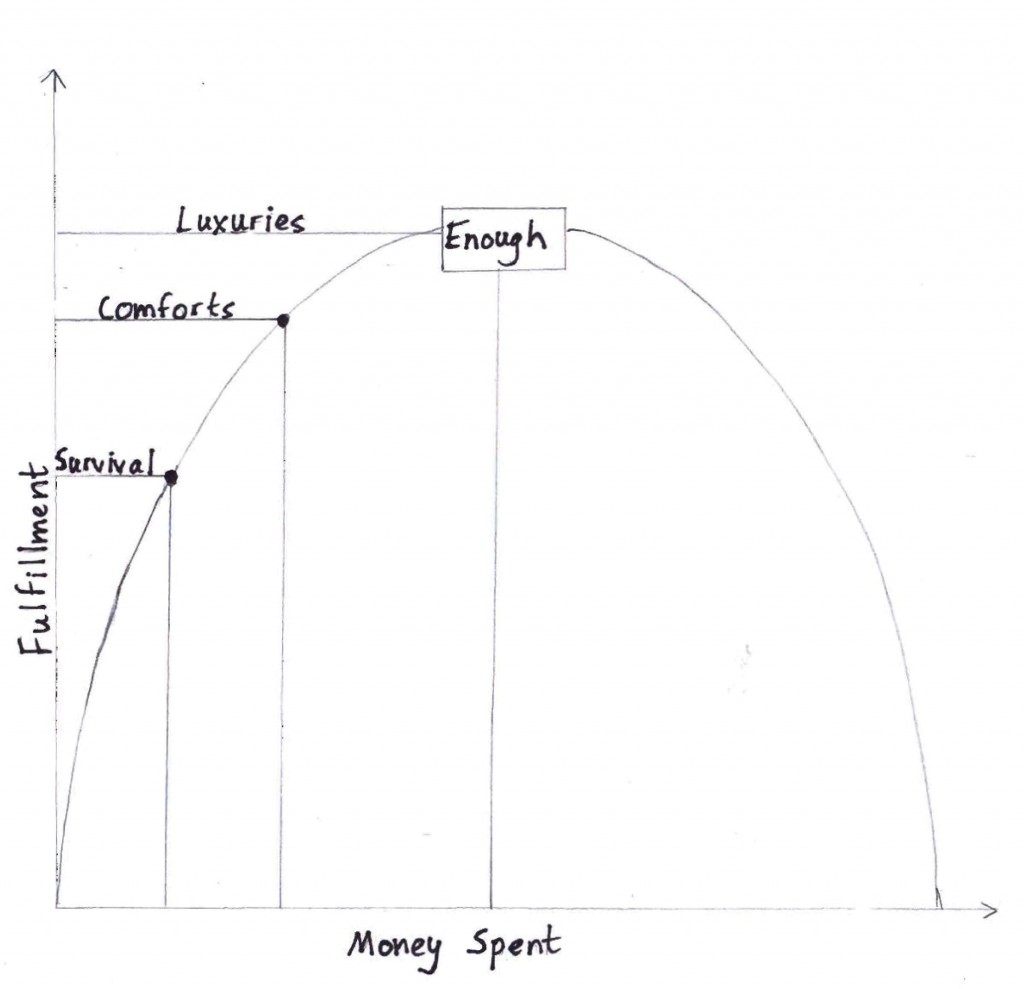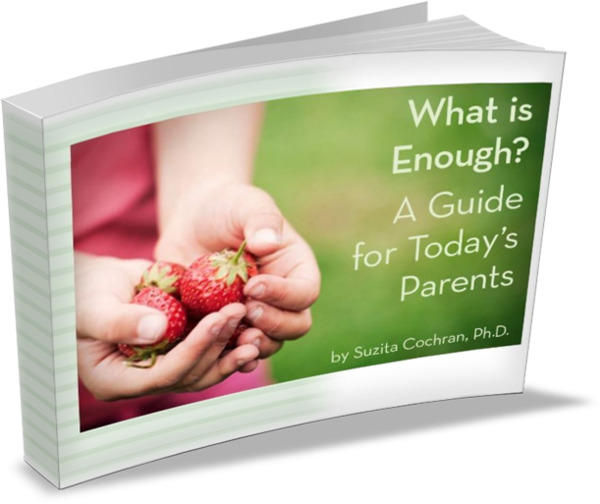I’ve been thinking about the idea of “enough.” Whether it’s a material item (shoes) or a non-material one (free time), how do you know when you have enough of something? Enough seems to reside at the sweet spot between needing more and wanting more. It’s a calm, settled, balanced place. Enough is a place where one easily feels gratitude and appreciation. At this sweet spot, we have access to the bigger picture and can gain perspective. When we stop at enough, the excess energy we would have used to secure more, becomes available for bringing creativity and ingenuity into our lives.
From what I can tell, unlike curiosity or the drive to play, awareness of “enough” is not a natural state throughout childhood. I remember very early on being assured my babies would drink as much breast milk as they needed, and indeed they did. After this point, however, it seemed risky to let the child set all the guidelines. Eating specialist Ellyn Satter’s advice of shared responsibility worked well at our family’s dinner table. She says it is the parent’s job to put out a meal of healthy food, but the child’s responsibility to choose which and how much of the food to eat.
Eating is the activity where it’s easiest for me to practice the concept of enough. The Japanese use the term “hara hachi bu” which means eat until you are eight parts (80%) full. I like this idea (unless I’m really hungry). The concept of enough is intertwined within hara hachi bu. If you know there is enough to go around, that there is enough for you, you’ll experience that calm, settled, balanced feeling while eating. Hara hachi bu requires an internal focus on the messages of one’s body, rather than an external focus on factors such as the amount of food left on your plate or a waiter’s suggestions.
I assume the Japanese incorporate the idea of hara hachi bu into other areas of their lives as well. This is more challenging for me and I’ve noticed, my kids. How do we know when we are 80% full of pants, kitchen gadgets, iPad apps, or video games? And realistically, we should probably start with knowing when we are 100% full before pulling back to the trickier notion of 80%. Help please!
When my son, Daniel, was eight his favorite toys were Bionicles, those scary-faced Lego brand plastic figures. Daniel loved his first Bionicle the way some kids love a cherished stuffed animal. He brought it everywhere. He smiled warmly upon it and hugged it when he woke up in the morning. I, myself, cringed every time I saw its angry scowl, oversized weaponry, and lobster claw hands. I warned Daniel that not all his friends, especially those outside the male persuasion, would adore Bionicles like he did.
Soon, Daniel was rather rapidly accumulating Bionicles. His favorite way to add to his collection was having us help him browse eBay for low-priced, previously-owned Bionicles. He was able to afford these on his own after saving his allowance for maybe three weeks. I guess you could say that during this time, Daniel was figuring out how many Bionicles were “enough.” Not an easy task. In the end, he peaked at twelve. I’m assuming that, because he peaked there, twelve was actually past his place of enough. After another few years, the glow faded and Daniel began to sell his Bionicles on eBay, probably to other children learning the lesson of how many are enough.
Our son Stephen has loved books for many years. He rarely meets a book that isn’t worth picking up and leafing through. And books are easy to acquire. We live biking distance from a well-stocked used bookstore. Stephen’s room, though, is small. Nevertheless, for a while he collected and assembled large piles of books “to read next.” During that time Todd and I would weave our way around stacks of upcoming reads to tuck Stephen into bed.
Eventually I think Stephen realized the numerous book piles were beginning to oppress him. He found himself in a place quite a bit past enough. These days Stephen keeps on hand two or three books to read next. He also saves certain beloved book series in his room to read again and again. And, being a geography guy, Stephen always has a plethora of atlases within reach. It’s not as if his bedroom is empty, but Stephen has found his enough sweet spot, at least when it comes to books. International soccer jerseys are another issue!
Our daughter, Annie, is a very social human. I know humans are by definition social beings, but this does not accurately describe Annie. If she had to choose between a new toy and a play date, the play date would win 95% of the time. Her capacity for social contact is simply greater than most. Extreme extraversion. Many personality theories posit, by the way, that over time we all tend to move toward the opposite side of our personality extremes. This suggests Annie will meet her inner introvert for the first time around college.
Still, for the past few years Annie has been learning that not every person has such a grand capacity for social time. She is gradually comprehending that her friends will need play time to end before she does. Annie has also been practicing and learning to enjoy being alone. Yes, for some kids this is a skill to be learned. Annie will probably continue to struggle with the lesson of how much social contact is enough for a while. She has improved her understanding of enough as she’s watched her friends. She sees when they surpass their sweet spot of enough during a playdate and melt down upon reaching the too-much point. And Annie is learning that to be a friend is not to push someone past their personal level of enough.
The book Your Money of Your Life introduces the concept of enough from a variety of perspectives. In one section the authors discuss the Fulfillment Curve which graphs the relationship between the amount of money we spend and our experience of fulfillment.
Authors Joe Dominguez and Vicki Robin summarize:
There is an interesting place on this graph – its peak. Part of the secret of life, it would seem, comes from identifying for yourself the point of maximum fulfillment. There is a name for this peak of the Fulfillment Curve, and it provides the basis for transforming your relationship with money. It’s a word we use every day, yet we are practically incapable of recognizing it when it’s staring us in the face. The word is “enough.” At the peak of the Fulfillment Curve we have enough. Enough for our survival. Enough comforts. And even enough little “luxuries.”
The wisdom of this lesson runs wide and deep. The first image that came to mind when I read about the fulfillment curve was chocolate covered almonds–pretty much my favorite treat on the planet. I’ve known for a while that the first (and honestly second) chocolate covered almonds always taste the best, so much better than the 20th. The first two are my peak on the fulfillment curve, my place of enough.
Or at least that’s what I’m working toward…
For now chocolate covered almonds can’t enter my home in quantities greater than two. With this food there is no such thing as hara hachi bu for me, as of yet. I’ll be better off starting my practice of hara hachi bu with root vegetables.
How do you know when you’ve reached the place of enough? How do you teach your kids this lesson? Leave a comment below!
__
Update: I’m writing a bit less frequently on Play. Fight. Repeat. because I am beginning work on a larger project, a parenting book covering many themes from this blog. You’ll continue to hear from me throughout this new undertaking, though. Your comments on Play. Fight. Repeat. are now more valuable than ever in helping me to clarify what subjects readers are thinking about, struggling with, and want more on.




 Sweet Spots: Helping Your Kids Find ENOUGH in Their Lives.
Sweet Spots: Helping Your Kids Find ENOUGH in Their Lives.


What an interesting subject for a blog. Food for thought for the adults in the family too. It would be fun to have a family discussion on the concept of enough…so appropriate for our consuming world. Thanks for something important and fascinating to think about.
Wow – this is especially interesting for me to read and contemplate. Personally, I struggle with “enough” and thus find it challenging to teach effectively to my kids. I just read an email from the principal of a middle school in Chicago, contemplating the ideas of teaching kids the value of struggling (another topic you’ve enlightened us on!) and delay of gratification. Maybe if we could hold off on “just one more”, we’d find we were already satistified. I hope I can keep this in mind!
Thanks for your comment! It reminded me of a New York Times magazine article that just came out titled, What if the Secret to Success is Failure? http://www.nytimes.com/2011/09/18/magazine/what-if-the-secret-to-success-is-failure.html?pagewanted=all It talked about different qualities of “character” to support in kids. I like your focus on holding off on the “just one more” requests. Then they don’t have to hold off on all of it, but this response could help kids think about the idea of enough.
Great post! Similar theme in “The ultimate cheapskate’s road map to true riches : a practical (and fun) guide to enjoying life more by spending less” by Jeff Yeage. He argues, persuasively, that everyone must slay their “Enough-asaurus.”
This has been difficult for me, in some areas. I used to be a huge Michigan football fan–lived and died by the team’s season. I’ve been to about 100 games. I went to the Rose Bowl and saw them win. They won the national championship back in the 1990s. I’m good. I don’t need any more. Now, I’m happy when they win, but it doesn’t impact me that much. I’ve had enough. My 5 year old has a mantra that he learned at school: “You get what you get and you don’t throw a fit.” I pray this will sink in (to all of us).
I love your Michigan football fan story!! And thanks for mentioning the book. I own or have read many of these books, but I don’t know this one. Looks good!
Great article. We’ve been seeing the “more-more-more” monster in our little ones and it has been on my mind. My approach was going to be to withhold more and to let them experience that they are really fine without it. The big aspect of it would be self-discipline. How do you effectively teach that? By experience? By guidance?
Ah, the $100,000 question… I did write about this in my post on the Marshmallow study, http://playfightrepeat.wordpress.com/2011/05/05/marshmallow-study/ -I’ve also found it helpful to tell my kids when I am using (or attempting to use) self-discipline. Just this morning I told my kids that when they went for a bike ride with their dad, I was going to sit down and write part of a chapter draft for at least 30 minutes, then I was going to reward myself my reading my novel. As my kids have gotten older, it really seems to catch their attention when their dad or I talk about things we are working hard on and how we try to make ourselves stick to our work timeline. Each of my kids could probably give you a detailed list of “treats that Mama uses” to reward herself for hard work. Thanks for your comment! I’ll try to write more about teaching kids self-discipline.
One of the “Enough” issues that I struggle with is buying stuff I don’t need while in a store. To combat that, I have made a rule for myself: Only buy what is on a list before I go in. If I see something else that I want, I can go back and get it later. Usually, I either forget about it, or decide it isn’t worth making another trip, but knowing that I haven’t completely lost my chance to own the thing makes it easier to leave it there. And since I follow this rule for myself, my kids understand when I impose it on them, also. I won’t buy them whatever catches their eye, but if they want it enough, I’ll drive them back to the store to buy it later (with their own money). The strategy really works well for our family.
I like this tip! Thanks. And think it’s nice that you are only asking your kids to do something that you do yourself as well!